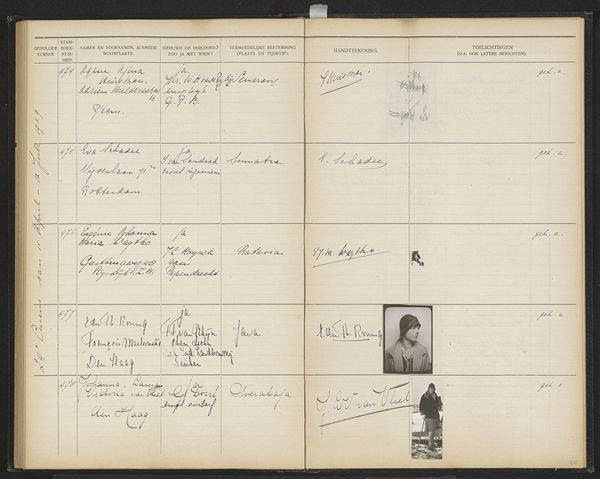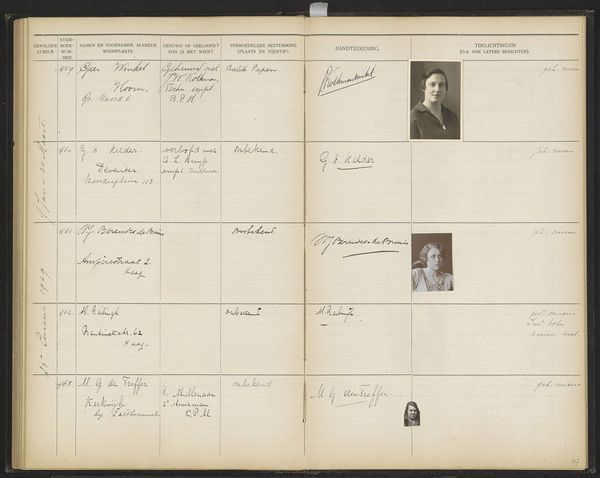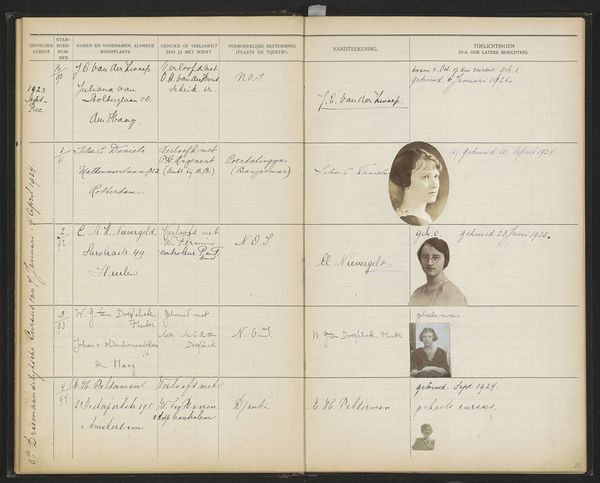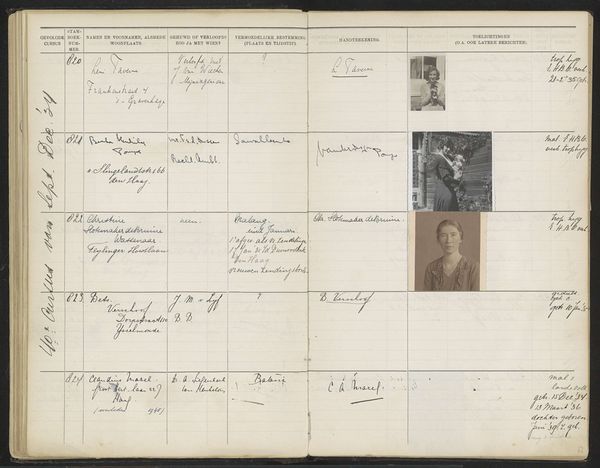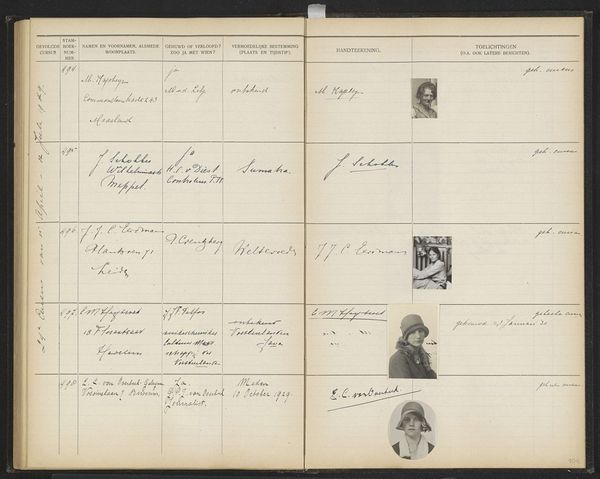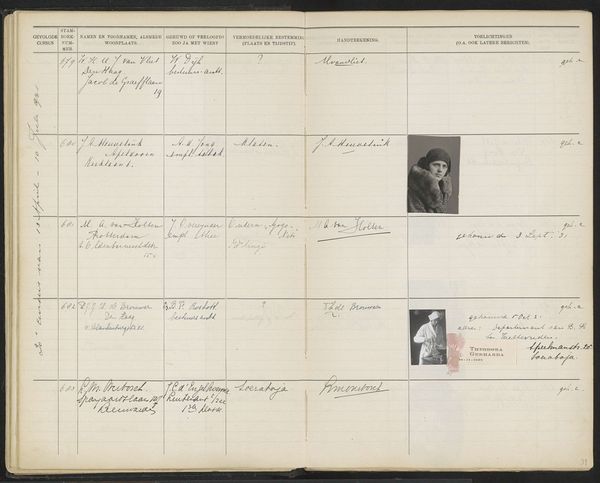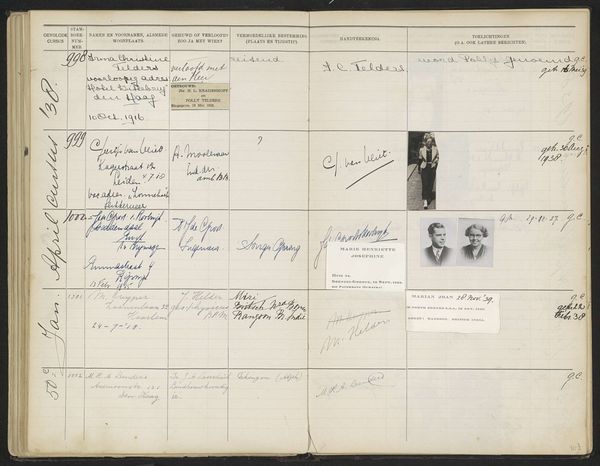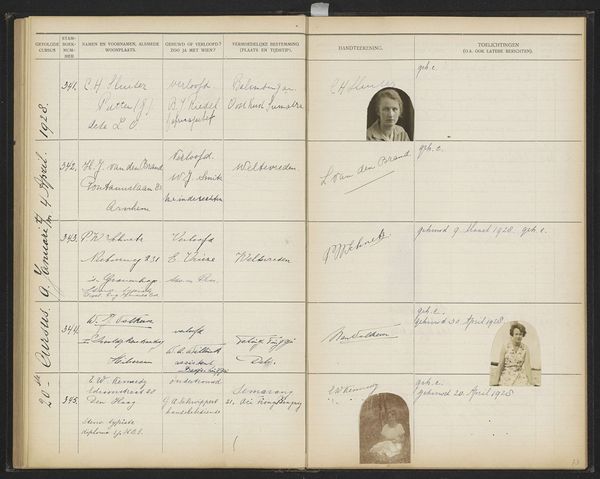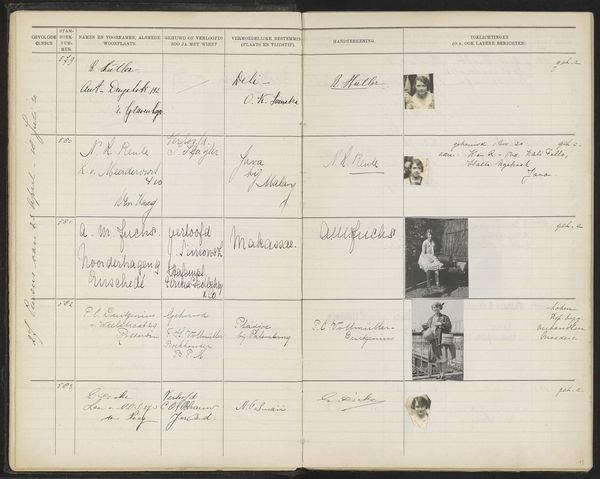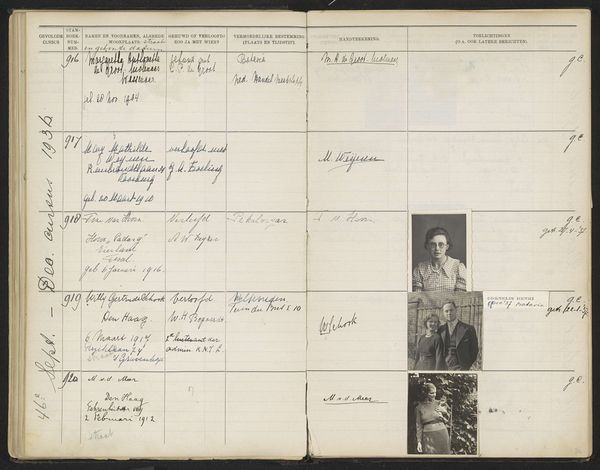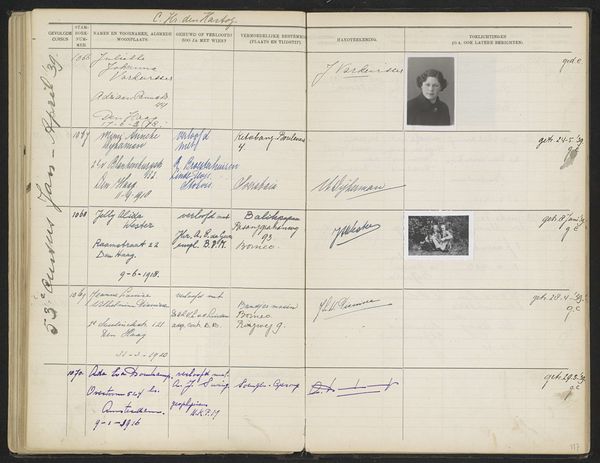
Blad 102 uit Stamboek van de leerlingen der Koloniale School voor Meisjes en Vrouwen te 's-Gravenhage deel I (1921-1929) Possibly 1929
0:00
0:00
mixed-media, paper, photography
#
portrait
#
mixed-media
#
paper
#
photography
Dimensions: height 340 mm, width 440 mm
Copyright: Rijks Museum: Open Domain
Curator: This object is described as "Page 102 from the Register of Students of the Colonial School for Girls and Women in The Hague, Part I (1921-1929)". It's a mixed media piece from possibly 1929, using paper and photography. It reminds me a bit of administrative documents, almost cold and impersonal despite the presence of individual photographs. What do you make of it? Editor: Well, I find the combination of bureaucratic handwriting and photographic portraits intriguing. Looking at it from a materialist perspective, I see this page as a manufactured object—paper, ink, photographs pasted in—representing a specific institutional function. How do the materials and process of production inform our understanding of the document's purpose? Curator: Precisely! The photographic element interests me most, suggesting a claim of individualization amidst the bureaucratic process. The format implies an intention beyond pure record-keeping. These were young women presumably being trained for service within the Dutch colonial empire, their labor essentially prepared for export. Doesn’t that transformation of individuals into a resource reveal some ideological framework at play here? Editor: It does. So, the photos are almost like product shots—individual faces reduced to a component in the colonial machine. The "mixed media" approach becomes charged with political meaning in that light, a sort of production line effect of identity. Is there anything we can find on what happened to the actual women pictured? Curator: Tracing the material journeys of each element– where did the paper originate, how was it produced, the photographic technology of the time, the labour involved, what happens to the people documented on these sheets—might indeed yield fascinating insights into that imperial infrastructure. Editor: I've never considered a school record as a statement on labor, that it would take examining materials and lives to deconstruct. That's really changed how I look at the document itself!
Comments
No comments
Be the first to comment and join the conversation on the ultimate creative platform.
